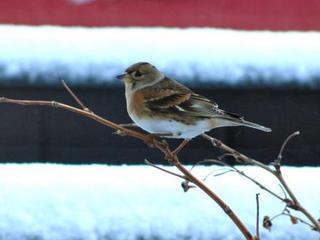Unusual Species Tallied in Unalaska Bird Count

Friday, January 06 2012
The 20th annual Unalaska Christmas Bird Count actually took place on New Year’s Day this year.
For those you alert enough to remember, it was a cold, snowy day, but 23 local birders put on their winter boots and divided into 10 teams to go hunt some birds. Not literally of course. In fact, count organizer Suzi Golodoff says the tradition started as a protest of hunting.
“The bird count started 112 years ago, in 1900, around Christmas time, I think on Christmas Day. Some early conservationist and birders on the East Coast got the idea to kind of do a census or count birds, sort of as a protest to the tradition of the day, which was to go out and shoot everything you could on Christmas and see what you could get.”
The count has evolved considerably from its humble beginnings; it’s now a nation-wide affair coordinated by the Audubon Society. In Alaska alone, there were 38 Christmas bird counts this year.
But Unalaska had a few species not included in any other count in the state. Golodoff says little bird called a brambling was particularly exciting.
“It’s a beautiful little bird. It hangs out with the juncos and the rosy finches down by the creek. Pretty little bird. Once in a while we get them here, but it’s an Asian stray, an accidental.”
Audubon Alaska spokesperson Beth Peluso says the brambling and another Asian stray called a dusky thrush were the most unusual birds counted in the state. Peluso says they were probably blown over from Asia by storms.
Unalaska had a total of 49 bird species on this count according to Golodoff, including some that are common in Alaska, but not locally.
“Our most exciting bird by far was that short-eared owl. We’ve never had one on a count before. So that was a huge bird for us, really exciting.”
Golodoff says the count brings not only unexpected birds, but unexpected birders out of the woodwork.
“You know, I usually think I’m kind of an oddball around town, but come Christmas time there’s a couple dozen of us that get out there. You’ve got to be kind of hardy, but we just get out and have a look and what’s around at that time of the year.”
She added that the count is an important resource for researchers because very little data is collected in wintertime.
“You can look up population declines, or you can look up patterns of what birds do given certain weather conditions.”
You can see the full results of all of the bird counts in the nation on Audubon’s Christmas bird count website.



